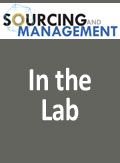Viewpoint: No Clear Path for Pharma or Outsourcing
PTSM: Pharmaceutical Technology Sourcing and Management
Politics, drug prices, tax reform, regulatory uncertainty leave CDMOs/CMOs guessing about pharma’s future.
In mid-2016, consolidation, IPOs, pharma-spinouts, and facility selloffs were the major themes in pharmaceutical outsourcing. In the aftermath of the US presidential election, pharma stocks (and other industrials) went up. This giddiness among pharma investors lasted less than a month, ending when President-Elect Trump told Time magazine, in his Person of the Year interview, “I’m going to bring down drug prices. I don’t like what’s happened with drug prices” (1).
There was no elaboration for several weeks, and industry, investors, and the general public alike were in the dark about what he meant and how he might achieve that goal. No one was prepared for his Jan. 11, 2017 press conference (2), in which he complained that pharma companies are “getting away with murder” and said that Medicare should be negotiating with drug companies for better prices. A few days later, he expanded that notion, calling for Medicaid to also have authority to negotiate prices, despite the fact that it has “best price” entitlement under current law.
The future of the CMO/CDMO sector
In recent months, the contract manufacturing and contract development organization (CMO/CDMO) industry has seen a major acquisition in Lonza-Capsugel; a significant one in Asahi Glass-CMC Biologics; a pair in which Pharma & Biopharma Outsourcing Association (PBOA) member Catalent acquired two potential PBOA members in Accucaps and Pharmatek; and a large IPO by Samsung Biologics, which seems to value that company as bigger than Catalent and Patheon’s combined market cap.
Where is the CMO/CDMO sector headed in 2017 and beyond? Making predictions is pretty inane at the moment, but the industry should see more efforts at integrating “one-stop” CDMO concepts, along the lines of Patheon’s OneSource model, and that may entail more mid- to large-scale acquisitions, along with strategic purchases for specific technologies.
Regarding the new administration in the United States, the industry is in wait-and-see mode. With the Republican party controlling both houses of Congress and President Trump in the White House, the Republicans will be in a position to implement business, industrial, and healthcare policy that can trickle down to affect the CDMO sector.
Tax reform seems to be the top priority for the GOP (after repealing the Affordable Care Act, the process for which has turned out to be a minefield). Along with a drop in the corporate tax rate, they have pushed for a tax holiday that would allow US-headquartered companies to bring overseas profits into the country at a reduced tax rate, along the lines of the American Jobs Creation Act of 2004, which lowered the tax rate from 35% to 5.25% for a one-time repatriation.
What effect could a large-scale influx of funds by major pharma companies have on CDMOs? Those pharma companies may simply pay out higher dividends to shareholders, but this repatriation could also trigger a wave of mergers and acquisition activity among domestic players, which could lead to shifts in outsourcing allocation. In concert with the GOP’s idea of a border adjustment tax, there may be greater investment in US R&D and manufacturing facilities by in-house pharma, as well as a potential shift from ex-US facilities to domestic CDMOs for products intended for the US market.
Anti-immigration sentiment could become problematic if it keeps high-value scientific personnel from coming to the US. More than one CDMO has expressed concern about potential visa restrictions and their impact on the labor pool.
FDA reform
Congress has talked about accelerating generic drug reviews to provide another outlet for bringing drug prices down. While more generic approvals could benefit the CDMO sector, based on this author’s experience inside the Generic Drug User Fee Act (GDUFA) II negotiations, FDA does not have a lot of margin to shave from review times.
The appointment of a new FDA commissioner could certainly shape policy in ways that benefit or hinder pharma and CDMOs, but FDA is awfully big, and it’s not the sort of organization that can change direction on a dime. Top-down policy decisions may impact discrete areas (will quality metrics survive the administration’s push for deregulation?), but the day-to-day functions of the agency overall may not reflect the priorities of a new administration very quickly.
It’s all too uncertain at this point, and no Magic 8-Ball is going to point out the correct path. But one can hope that the new administration recognizes the value that the pharma industry brings to the US healthcare ecosystem, the financial and innovative engines that they represent, and the importance of the CMO/CDMO sector. PBOA’s members provide pharma and biotech companies with the advanced dose forms, regulatory-compliant manufacturing, and supporting development services that help them develop and manufacture drugs, biologics, vaccines, and other treatments safely and cost-effectively, and I hope we can work with the new administration to continue to bring value to American patients.
References
1. M. Scherer, “2016 Person of the Year Donald Trump,” Time, Dec. 19, 2016.
2. President-elect Donald Trump, press conference, “Donald Trump’s News Conference: Full Transcript and Video,” New York Times, Jan. 11, 2017.

Transformations in Drug Development for Cell and Gene Therapies
March 28th 2025As a recognized leader in immunophenotyping for clinical trials, Kevin Lang from PPD discusses how spectral flow cytometry is transforming drug development, particularly in cell and gene therapies like CAR-T. He also dives into his award-winning research, including his 2024 WRIB Poster Award-winning work, and his insights from presenting at AAPS PharmSci360.
Advancing Clinical Trials with Spectral Flow Cytometry: A Conversation with Kevin Lang
March 28th 2025As a recognized leader in immunophenotyping for clinical trials, Kevin Lang from PPD discusses how spectral flow cytometry is transforming drug development, particularly in cell and gene therapies like CAR-T. He also dives into his award-winning research, including his 2024 WRIB Poster Award-winning work, and his insights from presenting at AAPS PharmSci360.